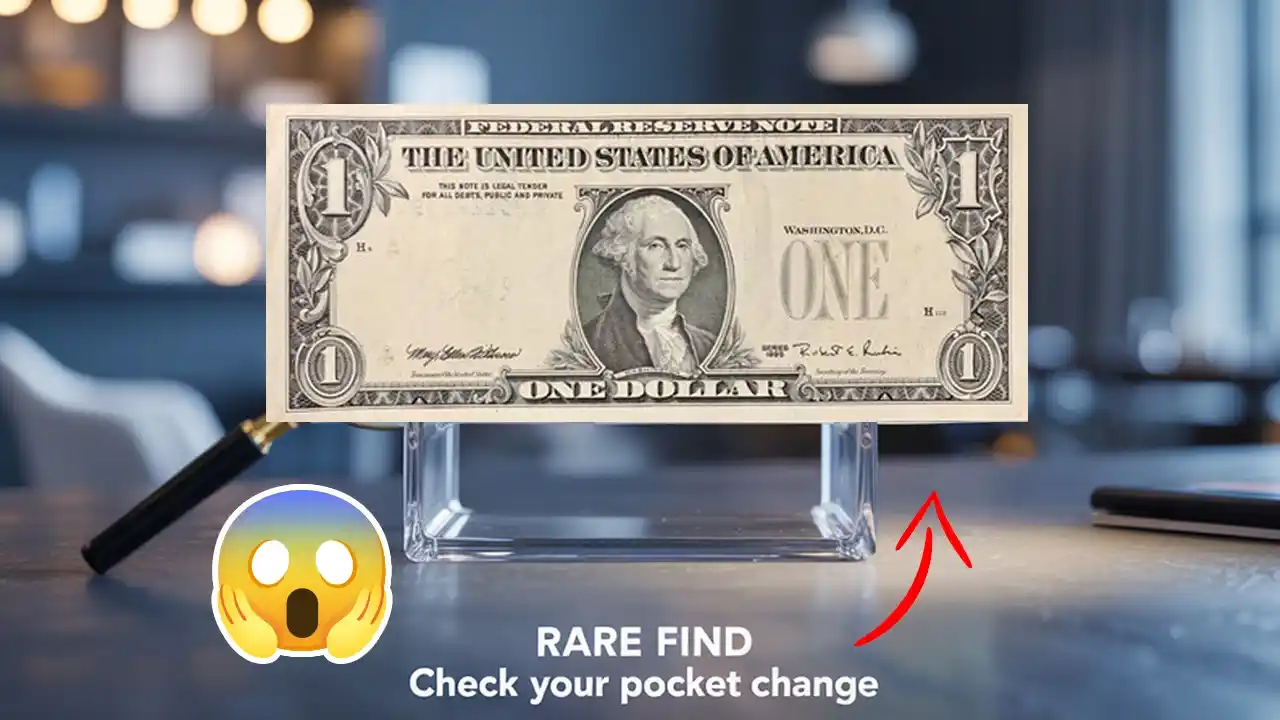Rare Error Worth Up to $1,500 Did you know that your old $5 bill might be worth hundreds—or even thousands—of dollars? If you’re holding a 1995 $5 bill, there’s a small chance it could contain a rare printing error that collectors are eager to find: the inverted Treasury seal.
Discover how to spot the rare 1995 $5 bill with an inverted seal. This error note can be worth over $1,000. Learn how to identify and sell it easily.
What Is the Inverted Seal Error?
A typical $5 bill features a green Treasury Department seal printed upright on the right side of Abraham Lincoln’s portrait. However, in some 1995 series $5 bills, a printing mistake caused this seal to be printed upside down.
These errors are exceptionally rare, as the U.S. Bureau of Engraving and Printing has very strict quality control. Still, a small batch of these misprinted notes slipped into circulation, and their collector value has soared ever since.
Why Is the 1995 $5 Bill with Inverted Seal Valuable?
The main reason this bill is valuable is scarcity. Most paper currency is printed flawlessly. But when a noticeable error—like an inverted seal—occurs, it makes the note significantly more desirable.
The 1995 series is especially notable because it falls during a time of design transition in U.S. currency. That makes this error even more historically important and a prized piece for collectors.
How to Identify a 1995 $5 Bill with an Inverted Seal
If you want to check your bills, here’s what to look for:
-
Series Year: Confirm that your bill is from the 1995 series.
-
Location of the Seal: On standard $5 bills, the green seal is on the right side of Abraham Lincoln’s portrait.
-
Orientation: On error notes, the seal will be upside down, not just slightly tilted—it’s clearly inverted.
If you have a magnifying glass or can scan the bill in high resolution, spotting the error becomes easier.
How Much Is It Worth?
The value of a 1995 $5 bill with an inverted seal depends on:
-
Condition: Crisp, uncirculated notes are the most valuable, often selling for $500 to $1,500 or more.
-
Circulated condition: Even worn bills can fetch $100 to $300, depending on overall demand.
-
Demand from collectors: As more people become aware of this rare note, its value could increase further.
How to Verify If It’s Genuine
Because counterfeiters sometimes try to replicate rare printing errors, it’s essential to authenticate your bill before selling it:
-
Visit a certified currency dealer
-
Use a professional grading service like PCGS Currency or PMG
-
They’ll confirm the note’s authenticity and condition, and often issue a certificate of grading
Can You Check for the Error at Home?
Absolutely. You don’t need special tools—just take a closer look at your $5 bills. Pay attention to:
-
The seal’s orientation
-
The series year
-
Any obvious signs of misprint
Make sure the note hasn’t been manually altered—some fakes are made by cutting and pasting parts of bills to simulate errors.
Frequently Asked Questions (FAQs)
Q1. What is an inverted seal on a $5 bill?
An inverted seal is a rare misprint where the green Treasury seal on the front of the bill is printed upside down.
Q2. Are all 1995 $5 bills with inverted seals valuable?
Yes, but the value depends heavily on condition. Uncirculated notes are worth more than heavily used ones.
Q3. How rare is the 1995 $5 bill with an inverted seal?
Extremely rare. Only a small number of these error notes entered circulation before the mistake was caught.
Q4. Where can I sell a 1995 $5 inverted seal note?
You can sell it via:
-
Currency and coin dealers
-
Auction houses
-
Online platforms like eBay (with proper documentation)
Q5. Can I check my $5 bills without professional tools?
Yes. By visually examining the green seal and ensuring it’s not upside down, you can identify potential errors from home.
Final Thoughts
If you come across a 1995 $5 bill, give it a second look—you might just be holding a rare collector’s item. With values ranging from hundreds to thousands of dollars, this printing error could turn your pocket change into a profitable discovery.
